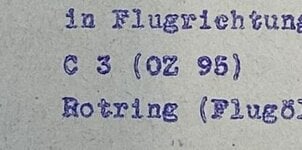GreenKnight121
Staff Sergeant
- 913
- Mar 16, 2014
Q: what was the 'British grey pool'? A civilian or military transport service? The US also supplied road tankers for fuel delivery. I can only imagine a 19 yr. old airman with a 45 ft tanker negotiating the country roads at night in E. Anglia...
Freeman does not specify where the term grey pool came from, the assumption is civil vehicles painted grey. They were the standard supply method but at times US tankers were needed as well, later came direct pipelines. When it comes to the UK pipelines they were for fuel, not just aviation fuel. The 100/150 fuel was dyed purple, I think 100/130 dyed green as aids to identification.
I suspect the term came from here:
At midnight on 3/4 September 1939, all the oil companies joined together to form the Petroleum Board. Every petrol station, depot or office, became a Petroleum Board establishment. Around 18,500 staff and every road tanker, barge or rail tanker wagon came under the Board. All the different grades of petrol were done away with and there was one 'pool' grade.
It would not surprise me if all the road, barge, or rail tankers were repainted a neutral grey to eliminate individual company markings.

